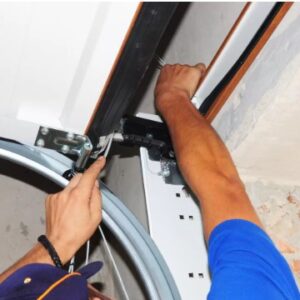A lot of teams reach a point where their product feels slow, fragile, or simply outdated. The natural instinct is to hit reset and rebuild everything from scratch. I used to think the same way. A clean rewrite felt like a fresh start, a chance to undo old mistakes and finally build the product the “right” way.
But after working on several web app rebuilds at Ouranos, I have seen both sides of that decision. Sometimes a rewrite really does give the product a second life. Other times it becomes a long tunnel with no light for months.
Most founders and product owners struggle because both options feel risky. If you rewrite, you lose time. If you refactor, you feel like you are just patching an old boat.
This article is not theory. These are the patterns we have seen repeatedly while handling legacy systems for clients. The kind of stories that stick with you because you remember the stress on launch day or the relief when a slow app finally started breathing again.
Let’s break it down in a simple, practical way.
The Case for Refactoring
Refactoring means improving the internal structure of your existing code without changing what the user sees. It is not glamorous work. Most teams refactor only when something hurts enough to force their hand.
But refactoring is the right choice in situations like these:
1. The system is stable, but messy
We once worked with a fintech startup that had grown fast. Their codebase looked like it had ten different authors, each with a different idea of how the app should be structured. New developers were taking days just to understand where anything lived.
The product was stable. Customers were happy. But the internal friction was huge.
For them, a rewrite made no sense. What they needed was clarity. We refactored: reorganized modules, cleaned duplicated logic, created shared components, and documented workflows. Within two months, their development speed doubled.
This is the kind of case where refactoring saves time and money.
2. You want to ship new features without breaking old ones
If you still have customers inside the product every day, a rewrite freezes your roadmap. No new features, no quick experiments, no small improvements.
In contrast, refactoring can happen alongside feature development.
You clean the code as you go. You replace a messy function while building the next release. This approach keeps the business moving.
3. You need performance improvements fast
Rewrites are slow. If your app is choking during peak traffic or loading in six seconds, you do not have the luxury of waiting for a brand new app that will take nine to twelve months.
Optimizing queries, caching responses, reducing API calls, compressing images, splitting bundles, and upgrading libraries often gives you a visible improvement in days or weeks.
I still remember an ecommerce project where pages were loading in more than five seconds. The client was convinced they needed a full rebuild.
We spent one week refactoring the image pipeline, updating a bottlenecked payment module, and optimizing React components. The page load time went from five seconds to under two seconds.
No rewrite could deliver that result in a week.
For a good reference, Google has a clear checklist on web performance basics.
The Case for a Full Rewrite
A rewrite means starting from zero. New architecture, new code, new structure. This is a powerful decision, but it requires courage because it comes with real cost.
Here is where a rewrite is not only justified but necessary.
1. The tech stack is outdated beyond repair
Some apps are built on frameworks or versions that are no longer maintained. I still get projects running on AngularJS or PHP versions that even security teams have abandoned.
You can refactor old tech only to a point. If the ecosystem has moved forward and you are stuck on an island, a rewrite is the only path that keeps your app alive long term.
If you want a detailed breakdown of how we handle old systems, you can read our guide on modernising legacy applications.
2. The architecture is fundamentally wrong for where the business is going
We once helped a healthcare platform that started as a simple booking tool. Over the years it grew into a teleconsultation system with payments, video calls, reports, and patient records.
Their original backend was never designed for that scale. Every new feature felt like stitching another piece onto a suit that was already too tight.
A rewrite allowed us to rebuild the foundation with microservices, proper access control, and modular frontend components. After that, everything else became easier.
3. There is too much technical debt
Sometimes the codebase is so tangled that even small changes trigger unpredictable bugs. You fix one issue and something unrelated collapses.
A developer once described their legacy app to me as a set of wires you are scared to touch because you do not know which one triggers the alarm. That is a rewrite situation.
4. You want a major shift in user experience
A radical UI change often affects the entire structure underneath.
If the current UX is deeply tied to old components or outdated logic, patching it becomes painful. A fresh rebuild gives the design team and tech team freedom to rethink everything properly.
A Simple Rule Many Teams Forget
If your business is stable and growing, refactor.
If your business is changing direction or the old system is blocking every step, rewrite.
Both paths are valid. What matters is understanding the cost of each.
A rewrite is expensive but sometimes the only way to unlock the next stage of the product.
Refactoring is quieter and less dramatic but often the fastest way to improve performance and developer speed.
The best decisions come from honest conversations between product, engineering, and business teams.
A Practical Guide to Choose the Right Path
Below is a quick checklist we use internally at Ouranos to guide clients.
Choose refactoring if:
-
The app is stable and only the code is messy
-
New developers can understand the system with some effort
-
Performance issues can be traced to a few hotspots
-
The tech stack is modern enough
-
You need continuous releases without a long pause
Choose rewriting if:
-
Every feature takes too long because of deep structural issues
-
Your framework or backend language is becoming obsolete
-
Bugs keep appearing in unexpected places
-
You want to redesign the entire product experience
-
Your architecture cannot support upcoming business requirements
Final Thoughts
Every web app reaches a breaking point. The only question is whether to fix the house you live in or build a new one nearby while you continue living your life.
What I have learned after watching both successes and failures is simple.
Do not choose based on frustration. Choose based on the direction you want your product to grow.
If your team is thinking about a rewrite or refactor and you want a second perspective, share your app’s context. The right decision can save months of effort, and we have seen enough real examples to help you avoid the painful ones.




